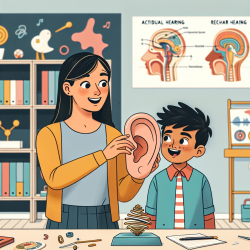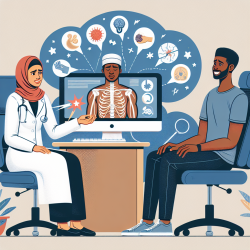Introduction
In the realm of pediatric neurosurgery, hemispherectomy and hemispherotomy are well-established procedures for treating intractable epilepsy. However, these procedures often result in contralateral hemiparesis and increased muscle tone, primarily due to spasticity. A recent case report published in Cureus explores the efficacy of Selective Dorsal Rhizotomy (SDR) in addressing these challenges, offering promising insights for practitioners aiming to improve therapeutic outcomes for children.
Understanding the Study
The study in question examined two pediatric patients who underwent hemispherectomy or hemispherotomy and subsequently received SDR to treat spasticity. The results were compelling: both children exhibited significant improvements in muscle tone and ambulation, with no evidence of dystonia post-SDR. This suggests that the increased muscle tone was primarily due to spasticity, not dystonia.
Key Findings
- Normalization of Muscle Tone: Post-SDR, both patients experienced a normalization of muscle tone in the lower extremities, which was previously heightened due to spasticity.
- Improved Ambulation: The children demonstrated enhanced walking capabilities, including longer distances with less fatigue and the ability to engage in more vigorous physical activities such as running and jumping.
- Voluntary Foot Movement: Notably, one child developed new voluntary foot dorsiflexion, while the other showed improvement in pre-existing dorsiflexion.
- Absence of Dystonia: The absence of dystonia post-SDR underscores the potential of SDR to specifically target spasticity-related issues.
Implications for Practice
For practitioners, these findings highlight the potential of SDR as a valuable intervention for children who have undergone hemispherectomy or hemispherotomy. The procedure not only addresses spasticity but also enhances overall quality of life by improving mobility and reducing fatigue.
Implementing SDR in clinical practice could lead to significant improvements in patient outcomes. However, it's crucial to consider patient selection carefully, ensuring that candidates for SDR have been seizure-free for at least twelve months, with or without minimal medication.
Encouraging Further Research
While the case report provides valuable insights, it also opens the door for further research. A multicenter prospective study could offer more comprehensive data on the long-term benefits and potential risks associated with SDR in this patient population. Such research would be instrumental in refining patient selection criteria and optimizing therapeutic protocols.
Conclusion
The case report underscores the potential of SDR to significantly enhance the lives of children undergoing epilepsy surgery. By effectively managing spasticity, SDR not only normalizes muscle tone but also empowers children to achieve greater independence and engage in physical activities that were previously challenging.
For practitioners dedicated to improving pediatric outcomes, incorporating SDR into treatment plans could be a game-changer. To delve deeper into the findings, I encourage you to read the original research paper: Selective Dorsal Rhizotomy For Treatment of Spasticity After Hemispherectomy In Children: A Case Report.










